Best Alternatives to Murata GCJ188R72A104KA01D Capacitor
GCJ 0.1μF Ceramic Capacitor ±10% X7R 0.063Lx0.031W 1.60mmx0.80mm -55°C~125°C 2 Terminations Surface Mount, MLCC 0603 (1608 Metric)









GCJ 0.1μF Ceramic Capacitor ±10% X7R 0.063Lx0.031W 1.60mmx0.80mm -55°C~125°C 2 Terminations Surface Mount, MLCC 0603 (1608 Metric)
Compare top alternatives to Murata GCJ188R72A104KA01D, including TDK, Samsung, Yageo, and AVX capacitors with matching specs for reliable replacements.
Product Introduction
You have many choices if you need an alternative to the Murata GCJ188R72A104KA01D. Some top options include:
Murata GRM188R71H104KA93D
TDK C1608X7R2A104K080AA
Samsung CL10B104KB8NNNC
Yageo CC0603KRX7R9BB104
AVX 06031C104KAT2A
Kemet C0603C104K1RACTU
Murata CGA3E3X7S2A104K080AE
Always check that capacitance, voltage, tolerance, dielectric, and package match your needs. These details matter most for automotive and high-reliability uses.
Murata GCJ188R72A104KA01D Features
Specs
You need to know the main specifications before choosing a replacement for the Murata GCJ188R72A104KA01D. This capacitor stands out because it offers a balance of size, reliability, and electrical performance. The table below shows the key details you should check:
| Specification | Details |
|---|---|
| Capacitance | 0.1 µF |
| Dielectric Type | X7R |
| Rated Voltage | 100 V |
| Tolerance | ±10% |
| Case Size | 0603 (1608 Metric) |
| Mounting Method | Surface Mount |
You see that this capacitor uses an X7R dielectric. This material helps the part stay stable over a wide temperature range. The 0603 case size means you can use it in compact designs. The ±10% tolerance gives you enough accuracy for most circuits. The 100 V rating lets you use it in circuits with higher voltages. Surface mount technology makes it easy to place on modern printed circuit boards.
Tip: Always match these specs when you look for alternatives. Even small differences can affect your circuit’s performance.
Applications
You will find the Murata GCJ188R72A104KA01D in many demanding environments. Its design supports both high reliability and small size. Here are some common uses:
Automotive electronics, such as engine control units and infotainment systems
Industrial equipment that needs boardflex sensitive components
Circuits that operate at high temperatures or need stable performance
High-density circuit boards where space is limited
Projects that require RoHS-compliant parts for environmental safety
You can trust this capacitor in automotive and industrial settings. Its ceramic material and robust build help it handle stress and heat. The small size fits well in crowded layouts. RoHS compliance means you meet modern manufacturing standards.
Alternatives
Murata GRM188R71H104KA93D
You can choose the Murata GRM188R71H104KA93D as a direct replacement for many applications. This capacitor matches the 0.1 µF capacitance, 100V rating, and X7R dielectric. The 0603 package size fits well on compact circuit boards. You get reliable performance for both automotive and industrial uses. This part comes from the same manufacturer as the Murata GCJ188R72A104KA01D, so you can expect similar quality and reliability. Many engineers use this part in power supplies, signal filtering, and decoupling circuits.
TDK C1608X7R2A104K080AA
TDK offers the C1608X7R2A104K080AA as a strong alternative. You get the same 0.1 µF capacitance and 100V voltage rating. The X7R dielectric ensures stable performance over a wide temperature range. The 0603 case size makes it easy to use in tight spaces. TDK is known for high-quality ceramic capacitors. You can use this part in automotive, industrial, and consumer electronics. It works well in circuits that need stable capacitance and good reliability.
Samsung CL10B104KB8NNNC
Samsung’s CL10B104KB8NNNC gives you several options for different environments. You can pick from three models, each with its own temperature range and voltage rating. The Advanced Model stands out for automotive use. It handles temperatures from -55°C to +125°C and supports 100V. This wide range helps your circuits survive harsh automotive conditions. The Pro Model goes even further, reaching up to 150°C and 200V for extreme environments like aerospace.
| Model | Temperature Range | Voltage Rating | Application Suitability |
|---|---|---|---|
| Base Model | -55°C to +85°C | 50V | Consumer electronics (e.g., smartphones) |
| Advanced Model | -55°C to +125°C | 100V | Automotive and industrial applications (higher reliability under harsh conditions) |
| Pro Model | -55°C to +150°C | 200V | Aerospace, military, and extreme environments |
You can see that the Advanced Model is best for automotive and industrial needs. Features like gold-coated terminals and tight tolerance help keep your circuits stable and reliable.
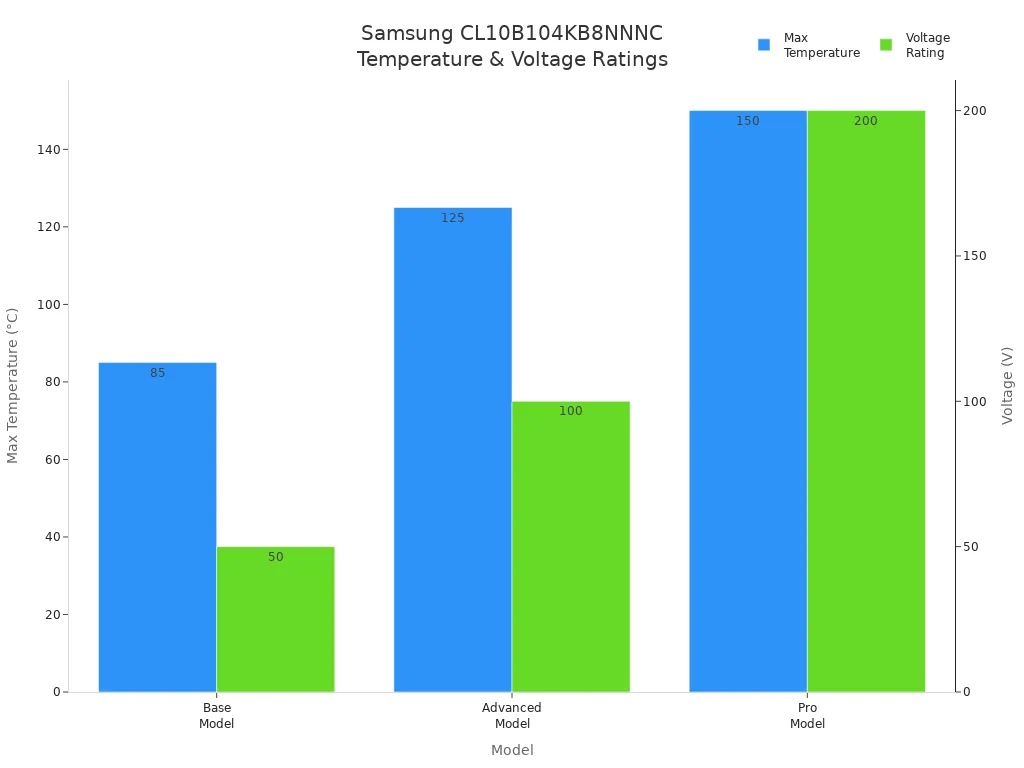
You will also find this part easy to source. Many distributors keep it in stock, so you can get it quickly for your projects.
| Distributor | Availability Status | Stock Quantity (units) | Lead Time | Notes |
|---|---|---|---|---|
| Arrow Electronics | In Stock | 397 | Factory lead time: 20 weeks for large qty | Cut Tape packaging available |
| Future Electronics | In Stock | 24,608,000 (Reel 4,000 units) | Factory lead time: 20 weeks for large qty | Multiple packaging options |
| DigiKey | In Stock | Over 1,058,000 | N/A | Multiple packaging options |
| Avnet | In Stock | 14,172,000 | N/A | Tape and Reel (4,000 units) |
| Mouser Electronics | In Stock | 7,372,899 | N/A | Reel (4,000 units) |
| Rutronik | In Stock | 840,000 | N/A | N/A |
| Newark | Out of Stock | 0 | N/A | Tape & Reel packaging |

Yageo CC0603KRX7R9BB104
Yageo’s CC0603KRX7R9BB104 is another good choice for your designs. This capacitor offers 0.1 µF capacitance, 100V rating, and X7R dielectric in a 0603 package. Yageo’s manufacturing process meets high standards. The company holds certifications such as ISO14001, ISO 9001, IATF16949, and ISO13485. These certifications show a strong focus on quality and automotive standards at the company level. However, you should always check the datasheet to confirm if the specific part meets your application’s needs. This part works well in general electronics and some automotive circuits.
ISO14001: Environmental management
ISO 9001: Quality management
IATF16949: Automotive quality management
ISO13485: Medical device quality management
AVX 06031C104KAT2A
You can use the AVX 06031C104KAT2A as a direct replacement for the Murata GCJ188R72A104KA01D. Both parts share the same capacitance, voltage, dielectric, and size. The ±10% tolerance is standard for X7R MLCCs. This means you get similar performance in filtering, timing, and bypassing circuits. The AVX part is suitable for automotive, mobile devices, and general electronics.
| Parameter | AVX 06031C104KAT2A | Murata GCJ188R72A104KA01D |
|---|---|---|
| Capacitance | 0.1 µF | 0.1 µF |
| Tolerance | ±10% | ±10% |
| Dielectric | X7R | X7R |
| Voltage Rating | 100 V DC | 100 V DC |
| Size (Case Code) | 0603 (1.6 x 0.8 mm) | 0603 (1.6 x 0.8 mm) |
| Effect on Circuit | ±10% tolerance allows capacitance variation typical for X7R MLCCs, influencing filtering, timing, and bypassing but comparable between both capacitors | |
| Application Suitability | Suitable for automotive, mobile devices, general electronics | Suitable for automotive, boardflex sensitive, general electronics |
You can trust this part for most applications where you would use the Murata GCJ188R72A104KA01D.
Kemet C0603C104K1RACTU
Kemet’s C0603C104K1RACTU gives you another reliable option. You get 0.1 µF capacitance, 100V rating, and X7R dielectric in a 0603 package. Kemet is known for high-quality MLCCs. This part works well in automotive, industrial, and consumer electronics. You can use it in circuits that need stable capacitance and good temperature performance. Always check the datasheet for details on temperature range and termination type if you need automotive-grade reliability.
Murata CGA3E3X7S2A104K080AE
If you need extra durability, you should consider the Murata CGA3E3X7S2A104K080AE. This capacitor uses soft termination technology. The soft termination acts as a buffer layer that absorbs mechanical strain. It protects the capacitor from cracks caused by board flexing and thermal cycling. This feature is very important in automotive electronics, where vibration and temperature changes can cause failures. The soft termination helps your circuits last longer and reduces the risk of failure. This part is AEC-Q200 qualified and can operate at temperatures up to 125°C. You can use it in harsh automotive environments that demand high reliability.
Tip: For automotive and high-reliability designs, always look for soft termination and AEC-Q200 qualification. These features help your circuits survive tough conditions.
Comparison
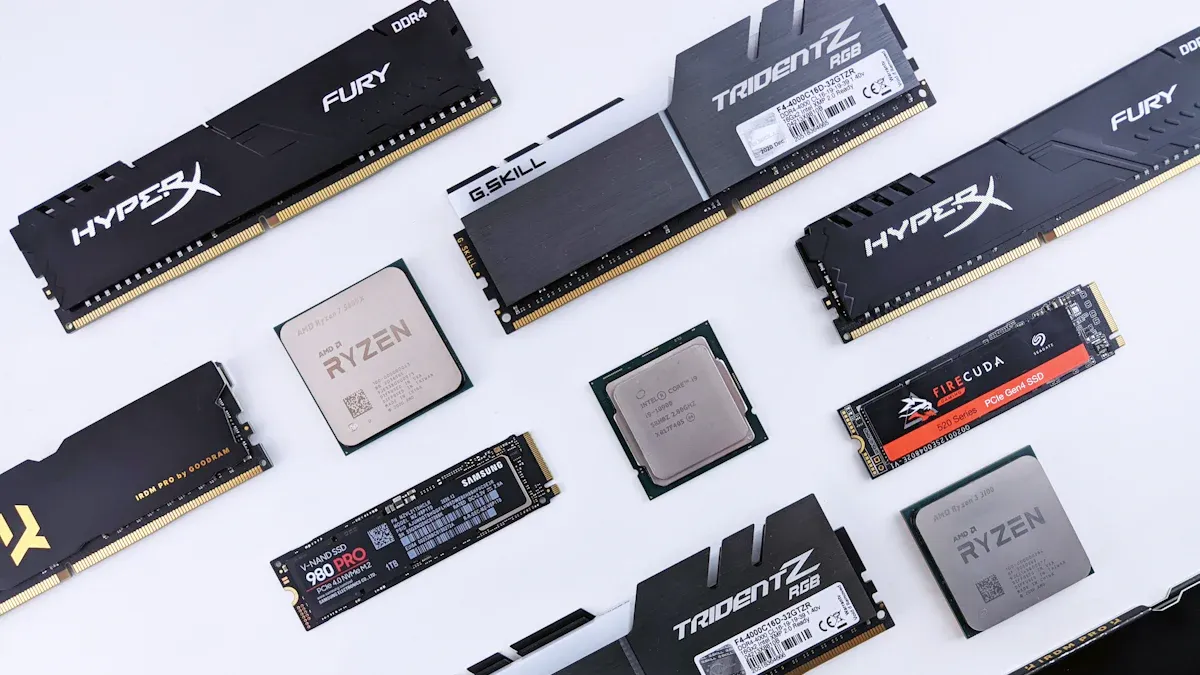
Electrical Specs
You want to make sure the electrical specs match your needs. The Murata GCJ188R72A104KA01D and its top alternatives all offer 0.1μF capacitance, a 100V voltage rating, and ±10% tolerance. They use X7R dielectric material, which gives you stable performance over a wide temperature range. The 0603 package is common for these parts. You can see the main specs in the table below:
| Part Number | Manufacturer | Capacitance | Voltage Rating | Tolerance | Dielectric | Package |
|---|---|---|---|---|---|---|
| GCJ188R72A104KA01D | Murata Electronics | 0.1μF | 100V | ±10% | X7R | 0603 |
| GRM188R71H104KA93D | Murata Electronics | 0.1μF | 100V | ±10% | X7R | 0603 |
| C1608X7R2A104K080AA | TDK | 0.1μF | 100V | ±10% | X7R | 0603 |
| CL10B104KB8NNNC | Samsung | 0.1μF | 100V | ±10% | X7R | 0603 |
| CC0603KRX7R9BB104 | Yageo | 0.1μF | 100V | ±10% | X7R | 0603 |
| 06031C104KAT2A | AVX | 0.1μF | 100V | ±10% | X7R | 0603 |
| C0603C104K1RACTU | Kemet | 0.1μF | 100V | ±10% | X7R | 0603 |
| CGA3E3X7S2A104K080AE | Murata Electronics | 0.1μF | 100V | ±10% | X7R | 0603 |
You can also compare these values visually:
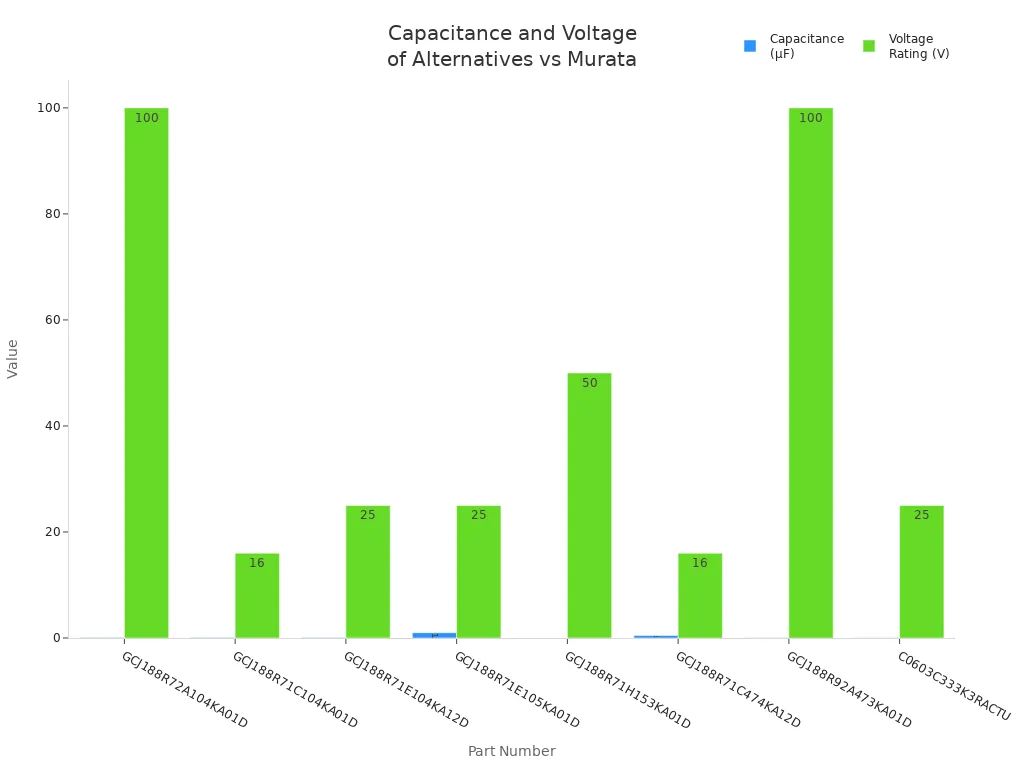
Package & Termination
You should look at package size and termination type when you need high reliability. All these capacitors use the 0603 package, which fits well in tight spaces. For harsh environments, soft or flexible terminations help prevent cracks from board flex or vibration. Some options, like the Murata CGA3E3X7S2A104K080AE, use soft termination for extra durability. Standard terminations (like Ni/Sn) work for most uses, but premium types (such as Ni/Au or PdAg) give you more protection in tough conditions.
| Termination Type | Barrier to Solder Leaching | RoHS Compliant | Suitability for High-Reliability |
|---|---|---|---|
| Ni/Sn | Yes | Yes | Standard, widely used |
| Flexterm Ni/Sn | Yes | Yes | Best for mechanical stress |
| Ni/Au Gold Termination | Yes | Yes | Premium, critical reliability |
| PdAg | None | Yes | Enhanced reliability, higher cost |
Tip: Choose flexible or premium terminations for automotive or industrial projects.
Performance
You want your capacitor to stay stable over time and temperature. X7R dielectric gives you good temperature stability. In lab tests, these capacitors show high stability at room temperature for a few hours and even better when stored cold. ESR (Equivalent Series Resistance) stays low, which helps your circuits run smoothly. If you use soft termination, you get better resistance to vibration and board flex. This means your circuit will last longer in cars or machines.

Availability
You need to find parts quickly for your project. Most of these alternatives are easy to buy from major distributors. Samsung, TDK, and Murata parts often have millions in stock. Some premium or automotive-grade versions may cost more or have longer lead times. If you need special features like soft termination, check availability before you order. You can usually find the Murata GCJ188R72A104KA01D and its alternatives in both small and large quantities.
Note: Always check stock and lead time before you finalize your design.
Selection Tips
Application Needs
You should always start by matching the capacitor’s specs to your project. Look at the voltage, capacitance, dielectric type, and package size. For automotive uses, you need parts that can handle high temperatures and strong vibrations. If you design for powertrain, safety, or infotainment systems, choose capacitors with AEC-Q200 qualification. This standard means the part passed tough tests for shock, vibration, and thermal cycling. Soft termination is also important. It helps the capacitor survive board flex and mechanical stress. You get better reliability in harsh environments.
Tip: For automotive and high-reliability circuits, always check for soft termination and AEC-Q200 compliance.
Manufacturer Quality
You want to pick capacitors from manufacturers with strong quality ratings. Automotive MLCCs need much higher quality than regular consumer parts. These capacitors must last 20 years or more, while consumer parts may only last 5 years. Cars use more MLCCs every year, so the risk of failure grows. Manufacturers work hard to lower failure rates by using advanced materials and strict production systems. They also design special series with stronger terminals and better stress tolerance.
Automotive-grade MLCCs must meet strict quality standards, including AEC-Q200 compliance and tough reliability tests.
Top manufacturers guarantee long life and zero-defect production for automotive parts.
Special MLCC series use enhanced materials and soft terminals to resist cracking and stress.
Reliability depends on how well the part handles aging, heat, and voltage.
You should balance performance, reliability, and cost, but always focus on minimizing failure rates for automotive projects.
Cost Factors
You need to consider price, especially for large projects. The cost of 0.1 µF, 100V, X7R, 0603 MLCC capacitors drops as you buy more units. For example, you might pay $0.020 each for a single part, but only $0.011 each if you order 1,000 or more.
| Quantity Range | Unit Price (USD) |
|---|---|
| 1+ | $0.020 |
| 10+ | $0.016 |
| 30+ | $0.014 |
| 100+ | $0.013 |
| 500+ | $0.012 |
| 1000+ | $0.011 |
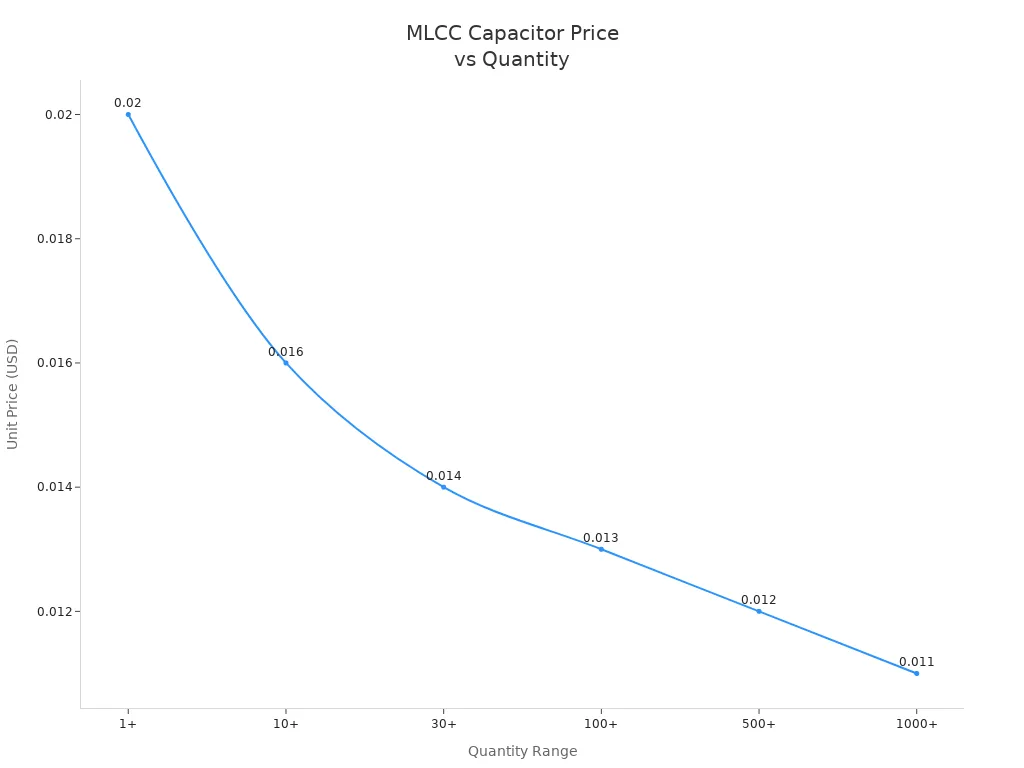
Note: Always balance cost with quality and reliability. For automotive and safety-critical designs, never sacrifice quality to save a small amount of money.
Murata GCJ188R72A104KA01D Table
When you select a capacitor for your project, you want to see all the important details in one place. The table below gives you a clear view of the main specifications for the Murata GCJ188R72A104KA01D. You can use this table to compare with other alternatives or to double-check if this part fits your needs.
| Specification | Value |
|---|---|
| Manufacturer | Murata Electronics |
| Part Number | GCJ188R72A104KA01D |
| Capacitance | 0.1 µF (100 nF) |
| Dielectric Type | X7R |
| Rated Voltage | 100 V |
| Tolerance | ±10% |
| Case Size | 0603 (1.6 x 0.8 mm) |
| Mounting Type | Surface Mount (SMD) |
| Operating Temp Range | -55°C to +125°C |
| Termination | Soft (flexible) |
| AEC-Q200 Qualified | Yes |
| RoHS Compliant | Yes |
Tip: Always check the operating temperature range and termination type. These features help you decide if the Murata GCJ188R72A104KA01D works for automotive or high-reliability circuits.
You can use this table as a quick reference when you compare capacitors. If you need a part for automotive electronics, you should look for AEC-Q200 qualification and soft termination. These features help your circuit last longer in tough environments.
Use the capacitance and voltage columns to match your circuit’s needs.
Check the package size to make sure it fits your board layout.
Look for RoHS compliance if you want to meet environmental standards.
If you want to learn more, you can always download the datasheet from the manufacturer’s website. This will give you extra details about performance and reliability.
You have several strong alternatives to the Murata GCJ188R72A104KA01D. Each option offers similar specs, but features like soft termination or AEC-Q200 qualification can make a difference for your project. Always match capacitance, voltage, and package to your needs.
Review supplier datasheets for details like ripple current and peak-to-peak values.
Check technical papers on capacitor selection and benchmarking studies.
Consider double-sourcing and look at other capacitor technologies if supply is tight.
Pay attention to component thickness and application requirements.
Careful selection helps you build reliable and cost-effective designs.
FAQ
What does AEC-Q200 qualification mean for capacitors?
AEC-Q200 means the capacitor passed strict tests for automotive use. You can trust these parts in cars and other harsh environments. This standard checks for vibration, heat, and long life.
How do you choose the right termination type?
You should pick soft or flexible termination for circuits that face vibration or board flex. Standard termination works for most uses. Soft termination helps prevent cracks and increases reliability.
Can you mix different brands of MLCCs in one design?
Yes, you can use different brands if the key specs match. Always check capacitance, voltage, dielectric, and package size. Review datasheets to make sure the parts work well together.
Why does the dielectric type matter?
The dielectric type affects stability and temperature range. X7R dielectric gives you stable capacitance from -55°C to +125°C. You get better performance in automotive and industrial circuits.
Where can you buy these capacitor alternatives?
You can buy these capacitors from major distributors like DigiKey, Mouser, Arrow, and Avnet. Many offer large stock and fast shipping. Always check availability before you order.
Specifications
- TypeParameter
- Lifecycle Status
Lifecycle Status refers to the current stage of an electronic component in its product life cycle, indicating whether it is active, obsolete, or transitioning between these states. An active status means the component is in production and available for purchase. An obsolete status indicates that the component is no longer being manufactured or supported, and manufacturers typically provide a limited time frame for support. Understanding the lifecycle status is crucial for design engineers to ensure continuity and reliability in their projects.
IN PRODUCTION (Last Updated: 1 month ago) - Factory Lead Time15 Weeks
- Mount
In electronic components, the term "Mount" typically refers to the method or process of physically attaching or fixing a component onto a circuit board or other electronic device. This can involve soldering, adhesive bonding, or other techniques to secure the component in place. The mounting process is crucial for ensuring proper electrical connections and mechanical stability within the electronic system. Different components may have specific mounting requirements based on their size, shape, and function, and manufacturers provide guidelines for proper mounting procedures to ensure optimal performance and reliability of the electronic device.
Surface Mount - Mounting Type
The "Mounting Type" in electronic components refers to the method used to attach or connect a component to a circuit board or other substrate, such as through-hole, surface-mount, or panel mount.
Surface Mount, MLCC - Package / Case
refers to the protective housing that encases an electronic component, providing mechanical support, electrical connections, and thermal management.
0603 (1608 Metric) - Terminal Shape
Terminal Shape in electronic components refers to the physical design of the connection points on the component that allow for electrical connections to be made. These terminals can come in various shapes such as pins, leads, pads, or terminals with specific configurations like surface mount or through-hole. The terminal shape is important as it determines how the component can be mounted on a circuit board or connected to other components. Different terminal shapes are used based on the specific requirements of the electronic circuit design and manufacturing process.
WRAPAROUND - Dielectric Material
a substance that is a poor conductor of electricity, but an efficient supporter of electrostatic field s.
CERAMIC - Voltage Rated
RATED voltage is the voltage on the nameplate - the "design point" for maximum power throughput and safe thermal operation.
100V - Operating Temperature
The operating temperature is the range of ambient temperature within which a power supply, or any other electrical equipment, operate in. This ranges from a minimum operating temperature, to a peak or maximum operating temperature, outside which, the power supply may fail.
-55°C~125°C - Packaging
Semiconductor package is a carrier / shell used to contain and cover one or more semiconductor components or integrated circuits. The material of the shell can be metal, plastic, glass or ceramic.
Tape & Reel (TR) - Series
In electronic components, the "Series" refers to a group of products that share similar characteristics, designs, or functionalities, often produced by the same manufacturer. These components within a series typically have common specifications but may vary in terms of voltage, power, or packaging to meet different application needs. The series name helps identify and differentiate between various product lines within a manufacturer's catalog.
GCJ - Size / Dimension
In electronic components, the parameter "Size / Dimension" refers to the physical dimensions of the component, such as its length, width, and height. These dimensions are crucial for determining how the component will fit into a circuit or system, as well as for ensuring compatibility with other components and the overall design requirements. The size of a component can also impact its performance characteristics, thermal properties, and overall functionality within a given application. Engineers and designers must carefully consider the size and dimensions of electronic components to ensure proper integration and functionality within their designs.
0.063Lx0.031W 1.60mmx0.80mm - Tolerance
In electronic components, "tolerance" refers to the acceptable deviation or variation from the specified or ideal value of a particular parameter, such as resistance, capacitance, or voltage. It indicates the range within which the actual value of the component can fluctuate while still being considered acceptable for use in a circuit. Tolerance is typically expressed as a percentage or a specific value and is important for ensuring the accuracy and reliability of electronic devices. Components with tighter tolerances are more precise but may also be more expensive. It is crucial to consider tolerance when selecting components to ensure proper functionality and performance of the circuit.
±10% - JESD-609 Code
The "JESD-609 Code" in electronic components refers to a standardized marking code that indicates the lead-free solder composition and finish of electronic components for compliance with environmental regulations.
e3 - Part Status
Parts can have many statuses as they progress through the configuration, analysis, review, and approval stages.
Active - Moisture Sensitivity Level (MSL)
Moisture Sensitivity Level (MSL) is a standardized rating that indicates the susceptibility of electronic components, particularly semiconductors, to moisture-induced damage during storage and the soldering process, defining the allowable exposure time to ambient conditions before they require special handling or baking to prevent failures
1 (Unlimited) - Number of Terminations2
- Temperature Coefficient
The resistance-change factor per degree Celsius of temperature change is called the temperature coefficient of resistance. This factor is represented by the Greek lower-case letter “alpha” (α). A positive coefficient for a material means that its resistance increases with an increase in temperature.
X7R - Terminal Finish
Terminal Finish refers to the surface treatment applied to the terminals or leads of electronic components to enhance their performance and longevity. It can improve solderability, corrosion resistance, and overall reliability of the connection in electronic assemblies. Common finishes include nickel, gold, and tin, each possessing distinct properties suitable for various applications. The choice of terminal finish can significantly impact the durability and effectiveness of electronic devices.
Tin (Sn) - with Nickel (Ni) barrier - Applications
The parameter "Applications" in electronic components refers to the specific uses or functions for which a component is designed. It encompasses various fields such as consumer electronics, industrial automation, telecommunications, automotive, and medical devices. Understanding the applications helps in selecting the right components for a particular design based on performance, reliability, and compatibility requirements. This parameter also guides manufacturers in targeting their products to relevant markets and customer needs.
Automotive, Boardflex Sensitive - Capacitance
Capacitance is a fundamental electrical property of electronic components that describes their ability to store electrical energy in the form of an electric field. It is measured in farads (F) and represents the ratio of the amount of electric charge stored on a component to the voltage across it. Capacitors are passive components that exhibit capacitance and are commonly used in electronic circuits for various purposes such as filtering, energy storage, timing, and coupling. Capacitance plays a crucial role in determining the behavior and performance of electronic systems by influencing factors like signal propagation, frequency response, and power consumption.
0.1μF - Packing Method
The packing method in electronic components refers to the technique used to package and protect the component during shipping and handling. It encompasses various forms including tape and reel, tray, tube, or bulk packaging, each suited for different types of components and manufacturing processes. The choice of packing method can affect the ease of handling, storage, and the efficiency of assembly in automated processes. Additionally, it plays a crucial role in ensuring the reliability and integrity of the components until they are used in electronic devices.
TR, PAPER, 7 INCH - Case Code (Metric)
Case Code (Metric) in electronic components refers to a standardized system that specifies the dimensions of surface-mount devices (SMD) in millimeters, consisting of a four-digit number where the first two digits represent the width and the last two digits represent the height of the component, measured in tenths of a millimeter. The metric case codes are standardized by organizations such as the EIA and IEC, and are often compared to the Imperial code which uses inches, allowing for easier identification and selection of components across different regions and industries. This coding system is widely used in the design and manufacturing of electronic devices, particularly in applications requiring compact and efficient component layouts, and is essential for engineers and designers to ensure proper component selection and facilitate the assembly process in electronic manufacturing.
1608 - Case Code (Imperial)
The term "Case Code (Imperial)" in electronic components refers to a standardized system used to specify the physical dimensions and package types of components, particularly capacitors and resistors. This code helps manufacturers and engineers identify the size and form factor of the component, ensuring compatibility with circuit designs and PCB layouts. In the context of electronic components, the Case Code (Imperial) typically follows a numerical format that indicates the length and width of the component in inches. For example, a Case Code of 1206 signifies a component that measures 0.12 inches by 0.06 inches. This coding system is essential for selecting the correct components for specific applications, as it provides a quick reference to the physical characteristics of the part, including its footprint and mounting style.
0603 - Capacitor Type
In electronic components, the parameter "Capacitor Type" refers to the classification of capacitors based on their construction and materials used. Capacitors are passive electronic components that store and release electrical energy. The type of capacitor determines its characteristics, such as capacitance value, voltage rating, temperature stability, and frequency response.There are various types of capacitors, including ceramic, electrolytic, tantalum, film, and variable capacitors. Each type has its own advantages and limitations, making them suitable for different applications. For example, ceramic capacitors are known for their stability and high frequency response, while electrolytic capacitors are commonly used for high capacitance values in power supply circuits.Understanding the capacitor type is crucial in selecting the right component for a specific circuit design to ensure optimal performance and reliability. It is essential to consider factors such as size, cost, temperature range, and voltage requirements when choosing the appropriate capacitor type for a particular application.
CERAMIC CAPACITOR - Temperature Characteristics Code
The "Temperature Characteristics Code" in electronic components refers to a code or designation that indicates how the component's electrical properties vary with changes in temperature. This code helps users understand how the component will perform under different temperature conditions. It typically consists of a series of letters or numbers that represent the component's temperature coefficient, which is a measure of how the component's electrical characteristics change with temperature. Understanding the temperature characteristics code is important for selecting components that will operate reliably in specific temperature environments and for ensuring the overall performance and stability of electronic circuits.
X7R - Multilayer
The parameter "Multilayer" in electronic components refers to the construction of the component using multiple layers of materials. This construction technique involves stacking several layers of conductive and insulating materials to create a compact and efficient component. Multilayer components are commonly used in various electronic devices to save space and improve performance. The layers are typically interconnected using vias or other methods to ensure proper functionality. Overall, the multilayer design allows for increased functionality and complexity in a smaller form factor, making it a popular choice in modern electronics.
Yes - Rated (DC) Voltage (URdc)
Rated DC Voltage (URdc) refers to the maximum direct current voltage that an electronic component can safely handle without degrading or failing. It is a crucial parameter that indicates the voltage level at which the component can operate reliably and efficiently. Exceeding this voltage can lead to breakdown, reduced lifespan, or complete failure of the component. This rating is essential for ensuring proper circuit design and component selection in electronic applications.
100V - Features
In the context of electronic components, the term "Features" typically refers to the specific characteristics or functionalities that a particular component offers. These features can vary depending on the type of component and its intended use. For example, a microcontroller may have features such as built-in memory, analog-to-digital converters, and communication interfaces like UART or SPI.When evaluating electronic components, understanding their features is crucial in determining whether they meet the requirements of a particular project or application. Engineers and designers often look at features such as operating voltage, speed, power consumption, and communication protocols to ensure compatibility and optimal performance.In summary, the "Features" parameter in electronic components describes the unique attributes and capabilities that differentiate one component from another, helping users make informed decisions when selecting components for their electronic designs.
Soft Termination - Height0.8mm
- Length1.6mm
- Width0.8mm
- Thickness (Max)
Thickness (Max) is a parameter in electronic components that refers to the maximum allowable thickness of the component. This measurement is important for ensuring proper fit and compatibility within a circuit or device. It is typically specified in the component's datasheet and is crucial for mechanical design considerations, such as determining clearance requirements and ensuring that the component can be properly mounted or soldered onto a PCB. Exceeding the maximum thickness limit can lead to issues such as interference with neighboring components, improper assembly, or mechanical stress that may affect the component's performance or reliability.
0.035 0.90mm - Thickness
Thickness in electronic components refers to the measurement of how thick a particular material or layer is within the component structure. It can pertain to various aspects, such as the thickness of a substrate, a dielectric layer, or conductive traces. This parameter is crucial as it impacts the electrical, mechanical, and thermal properties of the component, influencing its performance and reliability in electronic circuits.
889μm - RoHS Status
RoHS means “Restriction of Certain Hazardous Substances” in the “Hazardous Substances Directive” in electrical and electronic equipment.
ROHS3 Compliant - Lead Free
Lead Free is a term used to describe electronic components that do not contain lead as part of their composition. Lead is a toxic material that can have harmful effects on human health and the environment, so the electronics industry has been moving towards lead-free components to reduce these risks. Lead-free components are typically made using alternative materials such as silver, copper, and tin. Manufacturers must comply with regulations such as the Restriction of Hazardous Substances (RoHS) directive to ensure that their products are lead-free and environmentally friendly.
Lead Free - Ratings
The parameter "Ratings" in electronic components refers to the specified limits that define the maximum operational capabilities of a component. These ratings include voltage, current, power, temperature, and frequency, determining the conditions under which the component can function safely and effectively. Exceeding these ratings can lead to failure, damage, or unsafe operation, making it crucial for designers to adhere to them during component selection and usage.
AEC-Q200
Parts with Similar Specs
- ImagePart NumberManufacturerCapacitanceMountPackage / CaseToleranceHeightRoHS StatusMoisture Sensitivity Level (MSL)Number of TerminationsView Compare
GCJ188R72A104KA01D
0.1μF
Surface Mount
0603 (1608 Metric)
±10%
0.8 mm
ROHS3 Compliant
1 (Unlimited)
2
0.1μF
PCB, Surface Mount
0603 (1608 Metric)
±10%
870 μm
ROHS3 Compliant
1 (Unlimited)
2
0.1μF
Surface Mount
0603 (1608 Metric)
±10%
900 μm
ROHS3 Compliant
1 (Unlimited)
2
0.1μF
PCB, Surface Mount
0603 (1608 Metric)
±10%
870 μm
ROHS3 Compliant
1 (Unlimited)
2
0.1μF
PCB, Surface Mount
0603 (1608 Metric)
±10%
870 μm
ROHS3 Compliant
1 (Unlimited)
2
Datasheet PDF
- Datasheets :
- ReachStatement :
 PIC18F66K80 Family of Microcontrollers: Technical Overview
PIC18F66K80 Family of Microcontrollers: Technical Overview29 February 2024281
 ULN2803A Transistor Arrays: Features, Speicifications and Applications
ULN2803A Transistor Arrays: Features, Speicifications and Applications17 May 20211985
 LT1085 Low Dropout Positive Regulators: Datasheet, Circuit and Replacement
LT1085 Low Dropout Positive Regulators: Datasheet, Circuit and Replacement24 November 20213138
 DHT11 Sensor: DHT11 Pinout, Application, Equivalent
DHT11 Sensor: DHT11 Pinout, Application, Equivalent15 April 20222884
 STM32F030R8T6 Microcontroller: Pinout, Applications and Datasheet
STM32F030R8T6 Microcontroller: Pinout, Applications and Datasheet07 November 20232212
 ESD1014 Protection Diode: Datasheet, Pinout, Application
ESD1014 Protection Diode: Datasheet, Pinout, Application16 September 2021670
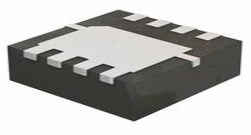 CSD18543Q3A Power MOSFET: Features, Pinout, and Datasheet
CSD18543Q3A Power MOSFET: Features, Pinout, and Datasheet18 April 20221728
 KSZ8081MNX Transceiver: Pinout, Equivalent and Datasheet
KSZ8081MNX Transceiver: Pinout, Equivalent and Datasheet24 January 20222490
 What is 3D XPoint?
What is 3D XPoint?09 November 20213997
 What is an Instrumentation Amplifier?
What is an Instrumentation Amplifier?27 March 202510988
 Inductance Basis: Definition, Structure and Applications
Inductance Basis: Definition, Structure and Applications18 April 20227041
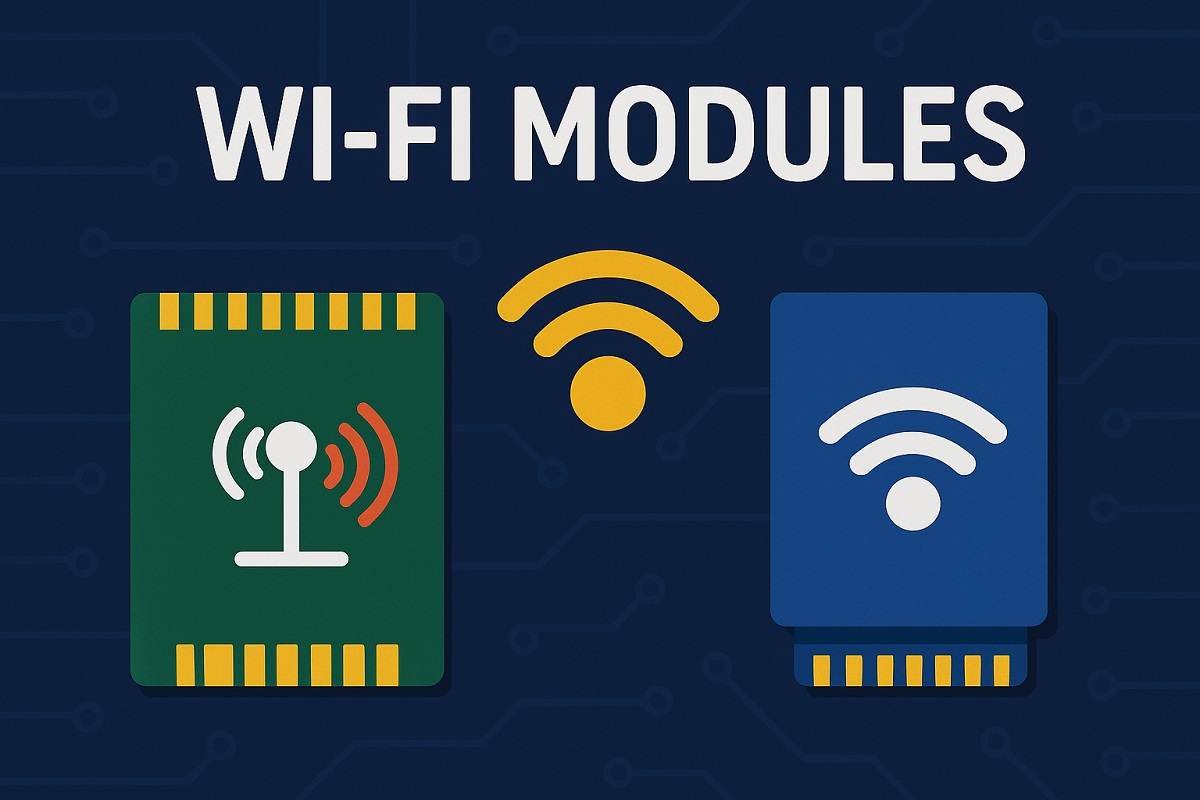 What Are Wi-Fi Modules and Their Uses in IoT Today
What Are Wi-Fi Modules and Their Uses in IoT Today04 June 2025637
 Basic Introduction to the Types of Capacitors
Basic Introduction to the Types of Capacitors16 October 20258906
 Random Access Memory: Definition, Types and Working
Random Access Memory: Definition, Types and Working29 August 20208997
 Lattice FPGA vs Competitors A Comprehensive Comparison
Lattice FPGA vs Competitors A Comprehensive Comparison09 June 20252916
 Three-Level Integration of Circuits
Three-Level Integration of Circuits05 May 20223177
Murata Electronics
In Stock: 21675
United States
China
Canada
Japan
Russia
Germany
United Kingdom
Singapore
Italy
Hong Kong(China)
Taiwan(China)
France
Korea
Mexico
Netherlands
Malaysia
Austria
Spain
Switzerland
Poland
Thailand
Vietnam
India
United Arab Emirates
Afghanistan
Åland Islands
Albania
Algeria
American Samoa
Andorra
Angola
Anguilla
Antigua & Barbuda
Argentina
Armenia
Aruba
Australia
Azerbaijan
Bahamas
Bahrain
Bangladesh
Barbados
Belarus
Belgium
Belize
Benin
Bermuda
Bhutan
Bolivia
Bonaire, Sint Eustatius and Saba
Bosnia & Herzegovina
Botswana
Brazil
British Indian Ocean Territory
British Virgin Islands
Brunei
Bulgaria
Burkina Faso
Burundi
Cabo Verde
Cambodia
Cameroon
Cayman Islands
Central African Republic
Chad
Chile
Christmas Island
Cocos (Keeling) Islands
Colombia
Comoros
Congo
Congo (DRC)
Cook Islands
Costa Rica
Côte d’Ivoire
Croatia
Cuba
Curaçao
Cyprus
Czechia
Denmark
Djibouti
Dominica
Dominican Republic
Ecuador
Egypt
El Salvador
Equatorial Guinea
Eritrea
Estonia
Eswatini
Ethiopia
Falkland Islands
Faroe Islands
Fiji
Finland
French Guiana
French Polynesia
Gabon
Gambia
Georgia
Ghana
Gibraltar
Greece
Greenland
Grenada
Guadeloupe
Guam
Guatemala
Guernsey
Guinea
Guinea-Bissau
Guyana
Haiti
Honduras
Hungary
Iceland
Indonesia
Iran
Iraq
Ireland
Isle of Man
Israel
Jamaica
Jersey
Jordan
Kazakhstan
Kenya
Kiribati
Kosovo
Kuwait
Kyrgyzstan
Laos
Latvia
Lebanon
Lesotho
Liberia
Libya
Liechtenstein
Lithuania
Luxembourg
Macao(China)
Madagascar
Malawi
Maldives
Mali
Malta
Marshall Islands
Martinique
Mauritania
Mauritius
Mayotte
Micronesia
Moldova
Monaco
Mongolia
Montenegro
Montserrat
Morocco
Mozambique
Myanmar
Namibia
Nauru
Nepal
New Caledonia
New Zealand
Nicaragua
Niger
Nigeria
Niue
Norfolk Island
North Korea
North Macedonia
Northern Mariana Islands
Norway
Oman
Pakistan
Palau
Palestinian Authority
Panama
Papua New Guinea
Paraguay
Peru
Philippines
Pitcairn Islands
Portugal
Puerto Rico
Qatar
Réunion
Romania
Rwanda
Samoa
San Marino
São Tomé & Príncipe
Saudi Arabia
Senegal
Serbia
Seychelles
Sierra Leone
Sint Maarten
Slovakia
Slovenia
Solomon Islands
Somalia
South Africa
South Sudan
Sri Lanka
St Helena, Ascension, Tristan da Cunha
St. Barthélemy
St. Kitts & Nevis
St. Lucia
St. Martin
St. Pierre & Miquelon
St. Vincent & Grenadines
Sudan
Suriname
Svalbard & Jan Mayen
Sweden
Syria
Tajikistan
Tanzania
Timor-Leste
Togo
Tokelau
Tonga
Trinidad & Tobago
Tunisia
Turkey
Turkmenistan
Turks & Caicos Islands
Tuvalu
U.S. Outlying Islands
U.S. Virgin Islands
Uganda
Ukraine
Uruguay
Uzbekistan
Vanuatu
Vatican City
Venezuela
Wallis & Futuna
Yemen
Zambia
Zimbabwe









